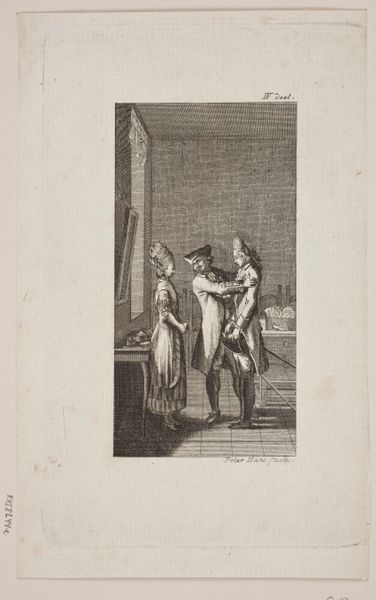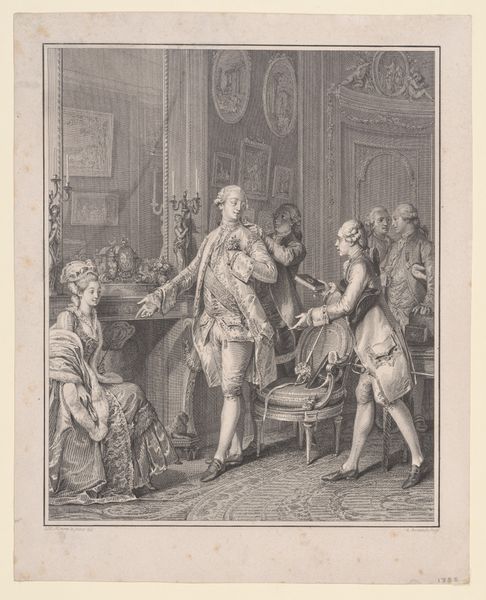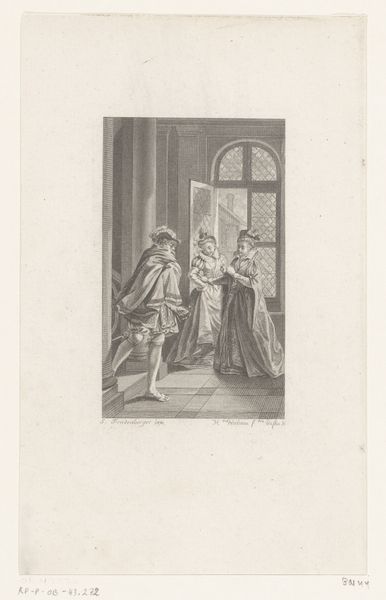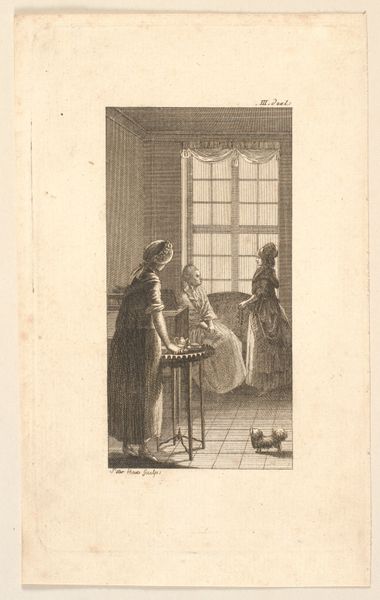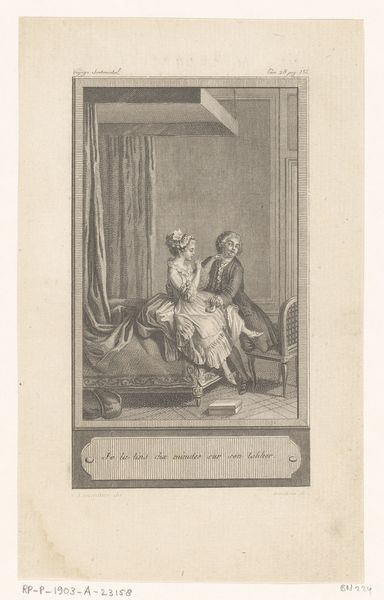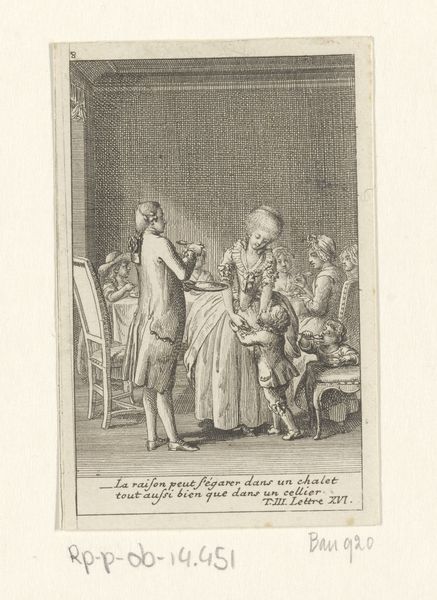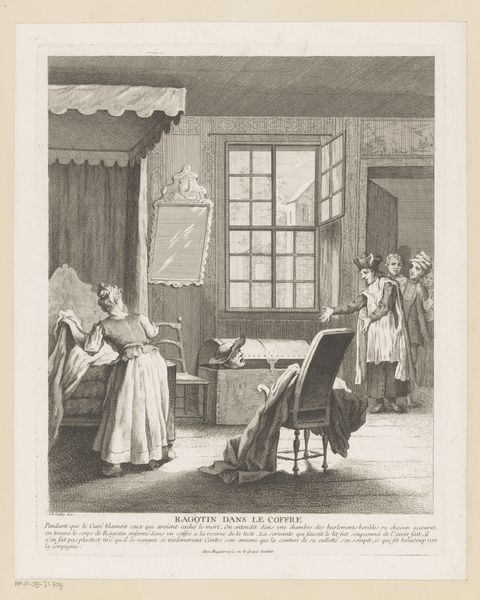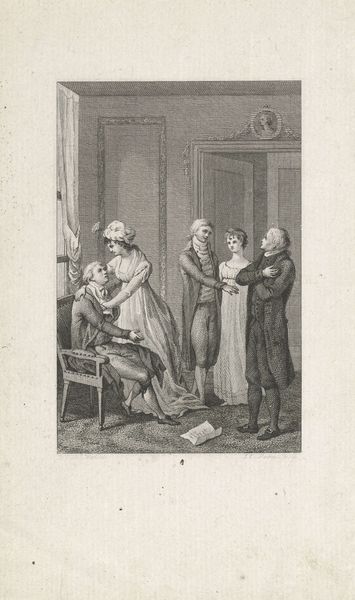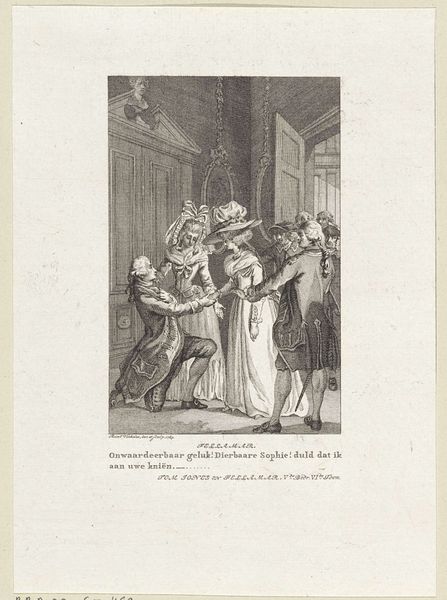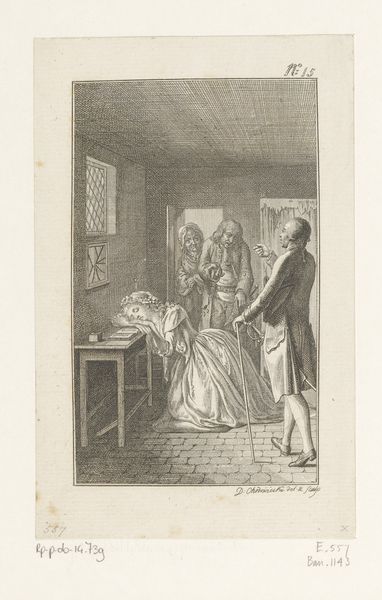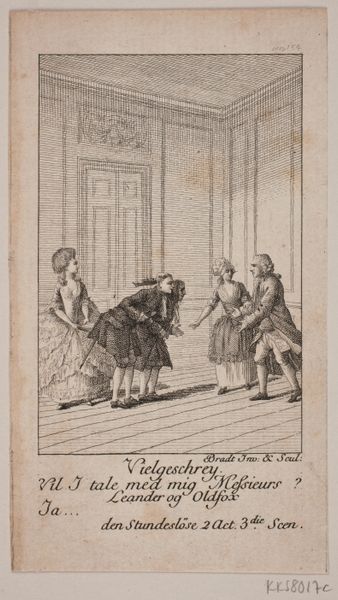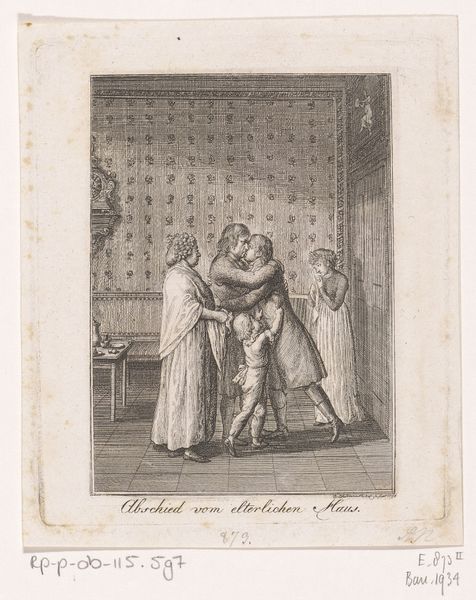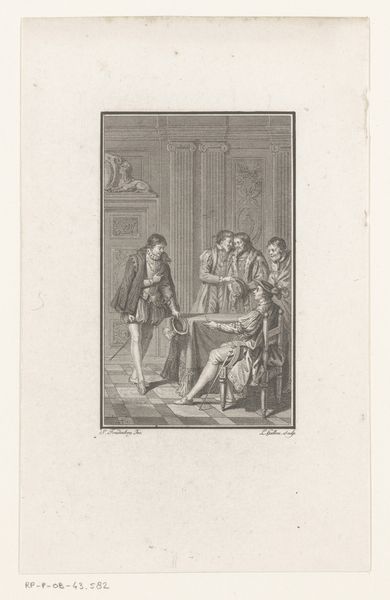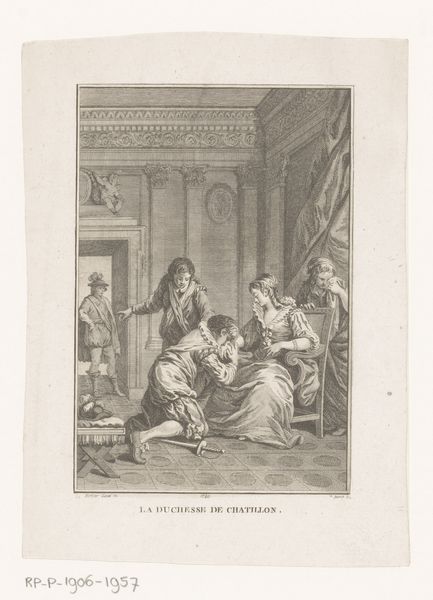
engraving
#
baroque
#
line
#
genre-painting
#
history-painting
#
engraving
Dimensions: height 370 mm, width 295 mm
Copyright: Rijks Museum: Open Domain
Editor: This is Jean-Baptiste Oudry's engraving, "Ragotin dronken op een stoel bij het vuur," made around 1726-1728. It depicts a rather unglamorous scene; a man slumped in a chair, seemingly inebriated, while two other figures are nearby. What stands out to me is how theatrical it feels, almost staged. What do you make of it? Curator: The theatricality is key, I think. Note the bed, partially obscured, and the almost aggressively performative gesture of the man pointing down at Ragotin. It's about more than just drunkenness. Look at how Oudry employs the visual language of "Rancune" or resentment through his drunk subject. Consider the history of portraying moral failings: how often is physical posture used to convey internal struggles? What immediate symbolic understanding did people then bring to images like this, and what traces of that linger with us today? Editor: So, you're saying the image draws upon established visual cues to communicate meaning about morality and social standing? Is the choice of clothing intentional to suggest Ragotin's role? Curator: Exactly. Costume often performs character. But, further, what of the shadowy lighting and the dramatic placement of objects within the space? The composition leads your eye but to *what* end? Is there a message about social harmony, power dynamics, the nature of humiliation, being conveyed? Editor: That's fascinating. The contrast between the brightly lit figures and the shadowed bed definitely creates a sense of unease and emphasizes Ragotin’s isolation. I initially just saw a funny drunk scene but now I realize its using symbols to deliver something more meaningful. Curator: Indeed, and this careful crafting of visual vocabulary links Oudry's image to broader cultural narratives and anxieties of the period. It reveals to us much more than a tipsy fellow. Editor: Thank you. I see so much more in the artwork than when we started this discussion.
Comments
No comments
Be the first to comment and join the conversation on the ultimate creative platform.
